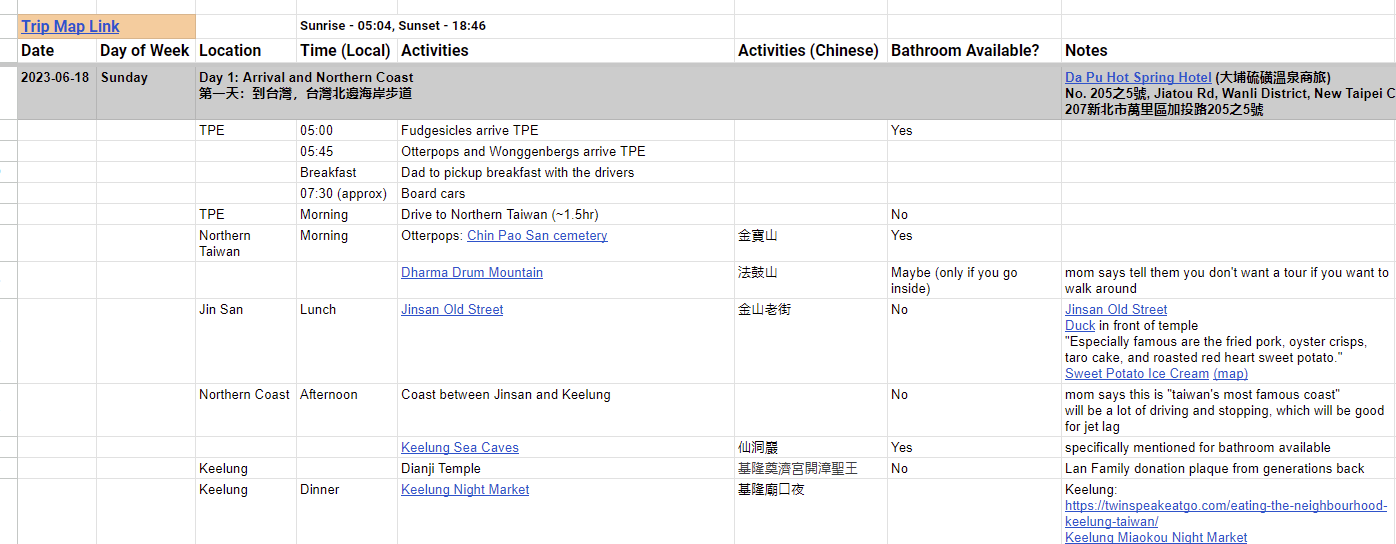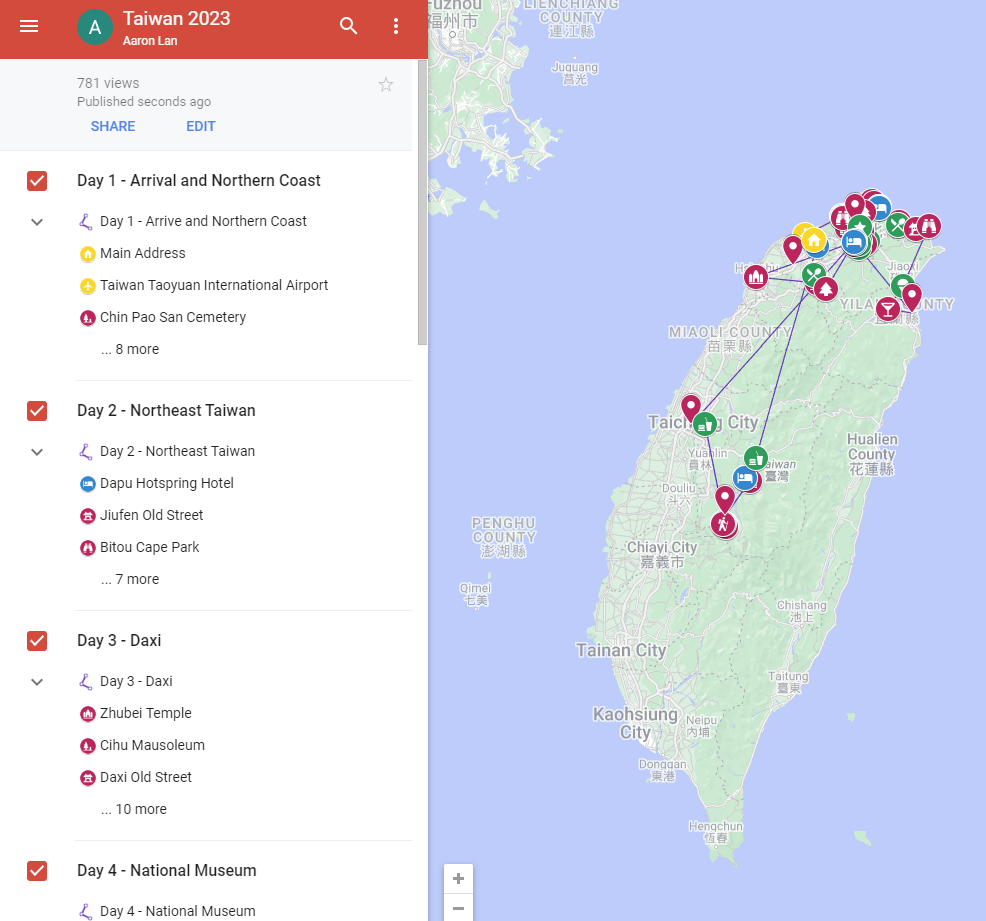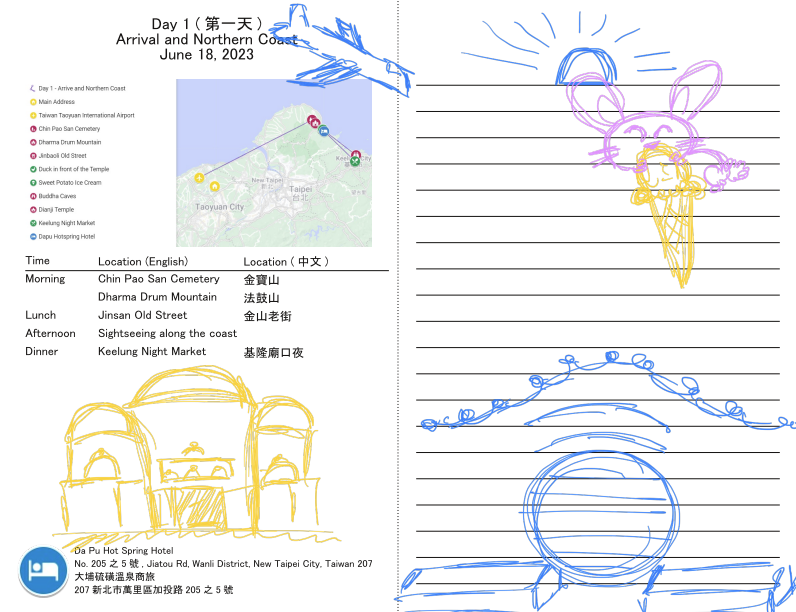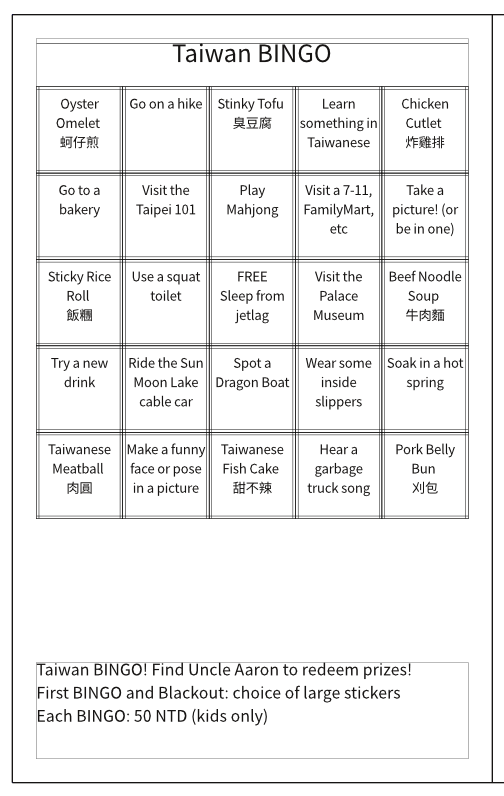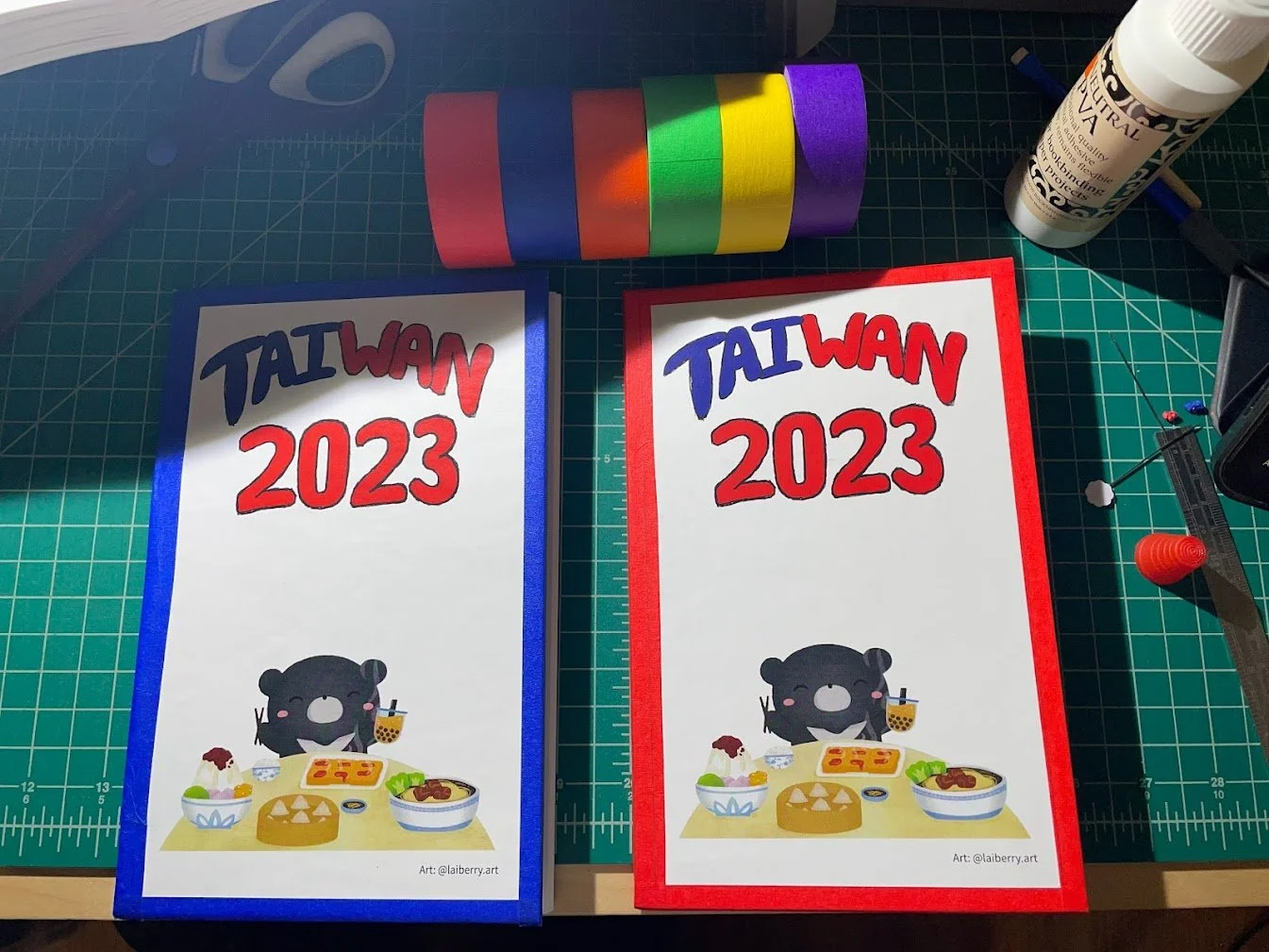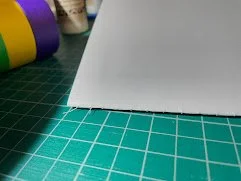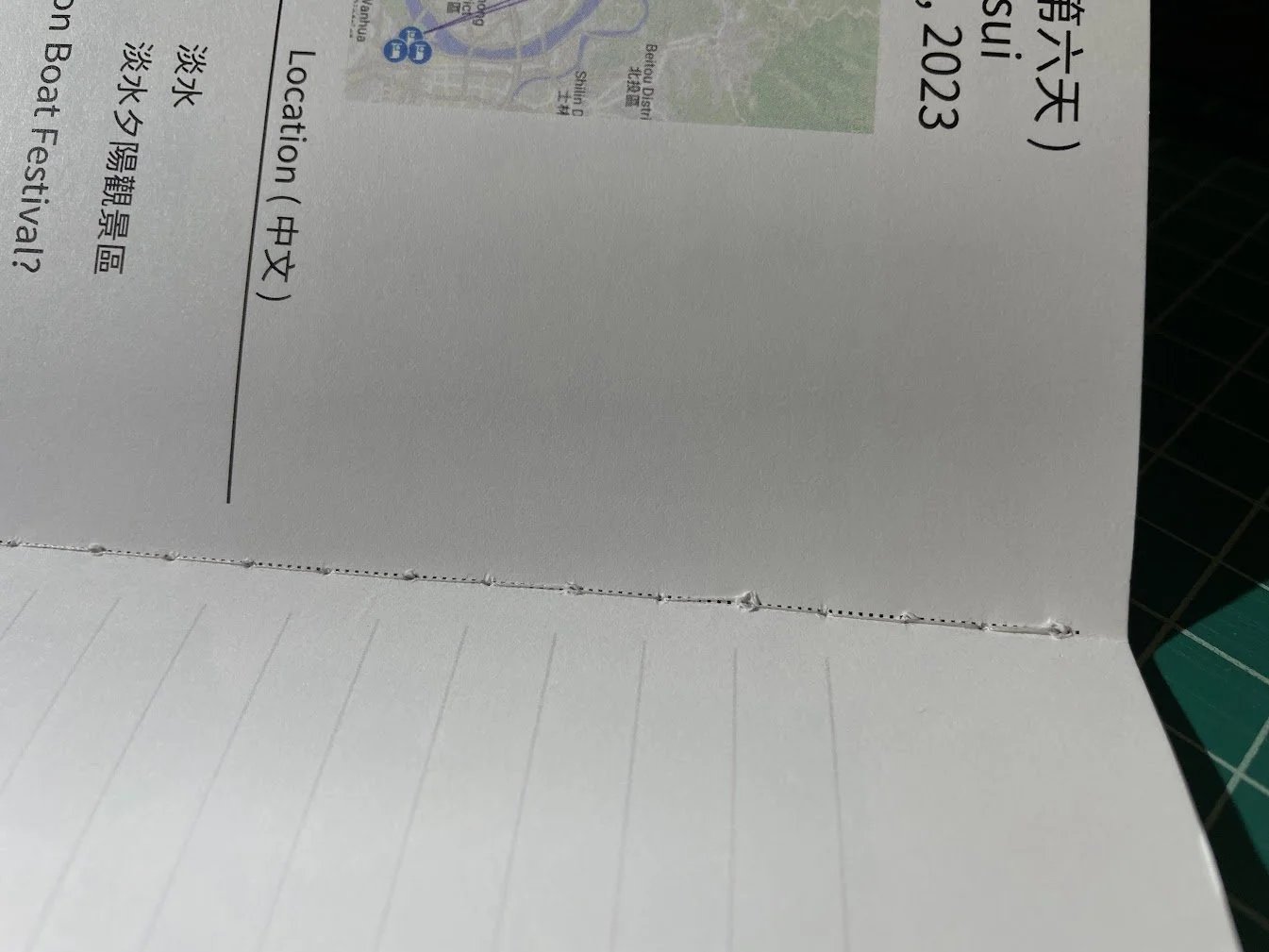“I want the kids to have something to journal in for this trip”
And with the kids thinking more about their daily schedules, the idea of an itinerary booklet was born.
So I ran with it.
The Trip: Taiwan
A family trip to Taiwan exploded when everyone we invited to join us decided they wanted to go. So instead of 7 people, we now had FIFTEEN! The 8 new joiners included 4 children, and all but one spoke any Chinese.
As we fleshed out the itinerary, we realized most of the group didn’t know anything about Taiwan. I was already researching and saving locations on Google Map, so I thought why not create a shareable map? So I played around with Google’s “My Maps” feature, and started sharing that with the group.
Brainstorming
The first objective was communicating the itinerary. The kids had started thinking about their own daily schedules, so giving them something they could reference would help alleviate some headaches.
This was pretty quick, since we already had maps for each day and the itinerary was planned in a morning/afternoon/evening format.
The other big influence was homework. Specifically, this should NOT be anything remotely close to homework. We had the itinerary set, but how could we add some color to it? How would we make sure the kids would use it?
Idea #1 was adding pictures. Might sound pretty common sense, but it wasn’t to me. One of the parents suggested it, and even started sketching it out.
Idea #2 was prompts, so the kids would have something to focus on. Originally these were on the same page as the writing space, which really made it look like homework. It wasn’t until some of the final iterations that we realized moving it off that page was a solution.
Bingo!
As we brainstormed about the idea, I thought a lot about how to keep the kids engaged. What did we want them to experience, and how could we guide them to want to try things?
Growing up visiting Taiwan every few years, I was hesitant to try a lot of food because it looked or sounded weird. How could we get them excited for unfamiliar experiences?
Once we settled on bingo, there was the question of prizes. With children, there’d be a lot of tears and anger if they feel like they missed out. Prizes had to be fair, and no risk of missing out. Luckily, around that time I came across some Taiwanese-American artists, and their stickers were great and on-theme for the trip.
Printing
I printed a lot of pages to check real sizing and confirm I was getting the page orders right on a bi-fold.
Once that was solved, I actually spent a few weeks thinking about what the final product would look like. The first requirement was hardcover — the kids should be able to write on it without needing to find a table. The second was keeping it slim — we’re a family of light packers, so it shouldn’t take up too much space.
Those requirements ruled out some more typical journal bindings like spiral or comb teeth. A typical hardcover book also seemed a bit too thick. But after seeing a composition notebook, it struck me. I examined how it was bound and realized I could do the same, except with a harder cardboard instead of their usual flexible one.
A quick test binding in black and white locked everything in.
Verdict:
These were amazing! The hard covers made them sturdy and durable, and the bindings really add some character to each booklet. The sewing took some effort by hand, so I’d probably want to have a better way for the next time.
I found out 7-11s in Taiwan had little print kiosks, so I printed pictures and just taped them in instead of actually writing in the booklet. Others, however, diligently wrote in the booklets, taped in tickets or brochures, and even collected stamps, which I didn’t know Taiwan had! I’ll definitely add more blank pages in the back next time for drawings and stamps.
I definitely want to do this again for future trips! Then I could build a collection of trip booklets, like a pseudo-scrapbook collection.
